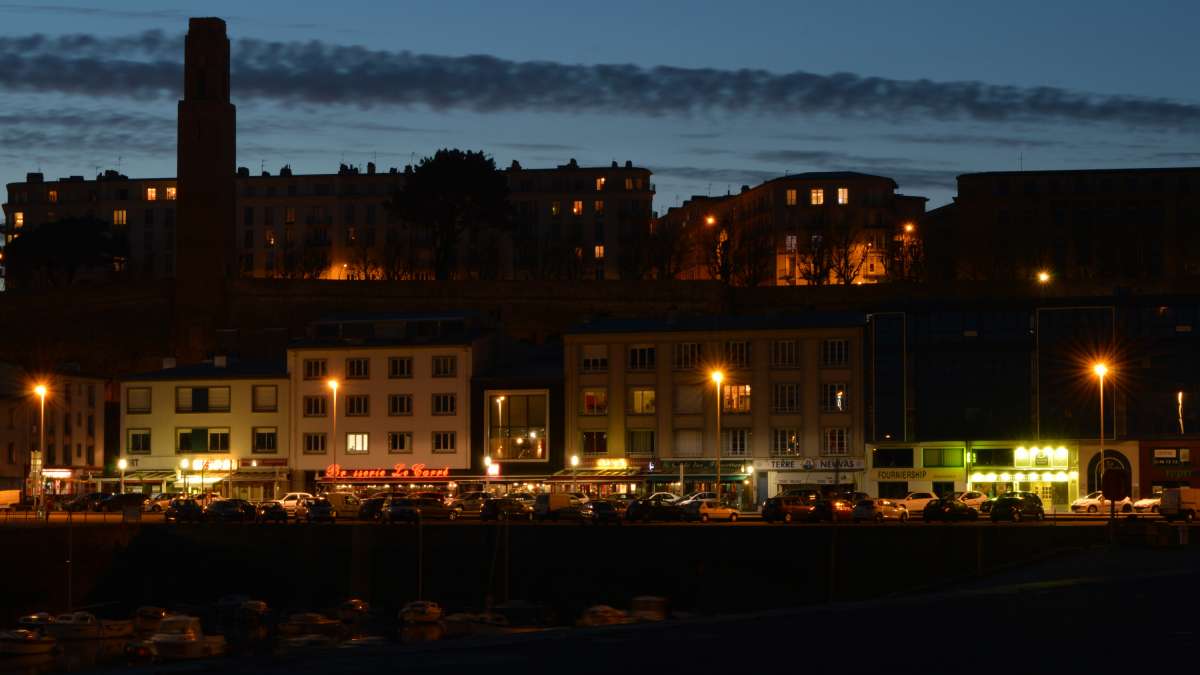
Artificial lighting is necessary for human activities, but it has an impact on the living world, particularly nocturnal species and species that depend on the alternation of day and night. This emerging subject is to be added to the list of threats confronting biodiversity that is in jeopardy.
Necessary, controlled, responsible lighting

Cerema is a public body incorporating very diverse specialised fields and occupations associated with urban development, infrastructures, environmental protection, etc. and so this subject is managed in a highly cross-sectoral manner, to provide answers that are as comprehensive as possible. The resulting analyses and recommendations combine the different approaches and viewpoints, rather than focusing on individual specialised fields and creating the risk of issuing contradictory recommendations.
Through this series of information sheets, Cerema is aiming to help those involved in lighting make the right decisions according to the context and requirements, in a situation where the legislation has changed recently. These information sheets are for a broad audience comprising the different entities involved in public lighting and urban development: local authorities of course, but also engineering firms, lighting designers and manufacturers, installers, urban planners, specialists in biodiversity and the environment, citizens and NGOs.
The main ambition is to contribute to developing a culture and vocabulary that is shared by these different players to encourage them to work in consultation with each other to reduce light pollution and its impacts on biodiversity.
Based on the principle that artificial lighting is by essence not “natural” and hence induces a modification of the nocturnal environment, a certain number of basic rules can be applied to reduce its negative effects, whichever technology is being considered. This will allow for more harmonious nocturnal co-existence between humans and other living beings, in an era when biodiversity is particularly under threat.
These rules, which also address other issues such as frugal use of energy and human health, converge around the idea of necessary, controlled and responsible lighting which is developed in the information sheets.
The first five sheets are on-line; four others will be published soon.
First information sheets about biodiversity and the ministerial decree
Sheet no.01 - Adapting lighting to the region’s biodiversity challenges
In order to survive, the objective of species with nocturnal habits is find a solution to this conundrum: “how to live at night, without the night ”.
Thanks to evolution and natural selection over a period of roughly 4 billion years, species have adapted to the day/night alternation by adopting various effective strategies. This information sheet enables you to discover what research can tell us about the interactions between biodiversity and artificial light. It describes the main known effects lighting has on species and proposes recommendations to implement as part of a lighting management plan adapted to take account of biodiversity on the scale of a region.
Sheet no.02 - Integrating nocturnal biodiversity issues into operational tools and planning

Local authorities have at their disposal many tools that can be used to better take account of nocturnal biodiversity when implementing land use planning, relating to many different themes and on different scales:
-
scoping documents, regional master plans, strategies and charters which define the orientations in important geographical areas: SRADDET, SRB, PNR, SAGE
-
tools for regional planning and urban planning: SCoT and PLU(i)
-
contractual tools to mobilise partners on a voluntary basis: ecological transition contract (CTE), permit for temporary occupation of the public domain (AOT), effective environmental obligation (ORE)
-
tools for planning energy policies: PCAET and SDE
This information sheet explains how these different tools can be used to reduce light pollution and its impacts on biodiversity, as illustrated by concrete examples when permitted by document resources.
Sheet no.03 - Considering the impact a light source’s light spectrum has on biodiversity when choosing it
The forms that artificial light can take are just as diverse as the perceptions of this light by the various species
Light is divided into a multitude of different wavelengths, as revealed by a rainbow which separates the wavelengths of daylight. Also, the impact of the wavelengths on biodiversity varies depending on the species. The central subject of this information sheet is the impact of the light spectrum on biodiversity, particularly animal biodiversity. This impact must be taken into account when choosing lighting technologies, because they may exhibit different light spectra.
Sheet no.04 - Understanding the ministerial decree of 27 December 2018 concerning light nuisance
This information sheet follows the structure of the ministerial decree. It gives details of the different categories of lighting installations, the timing prescriptions (switching off) and technical prescriptions (colour temperature, level and distribution of luminous flux) which apply to it. It then presents the specific cases of biodiversity hotspots and astronomical sites, and ends with the calendar for enforcement of the decree’s prescriptions.
The themes of the next four information sheets will be:
-
Standards, regulations and recommendations for public lighting,
-
Designing and managing a lighting installation to limit light pollution,
-
Modulating artificial lighting: social acceptability and responsibilities,
-
Financing a lighting project incorporating biodiversity and frugal use of energy.

